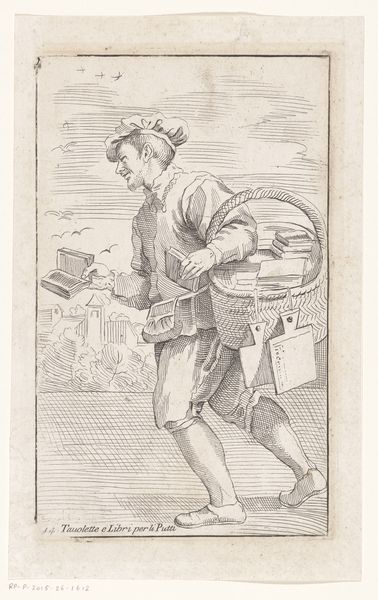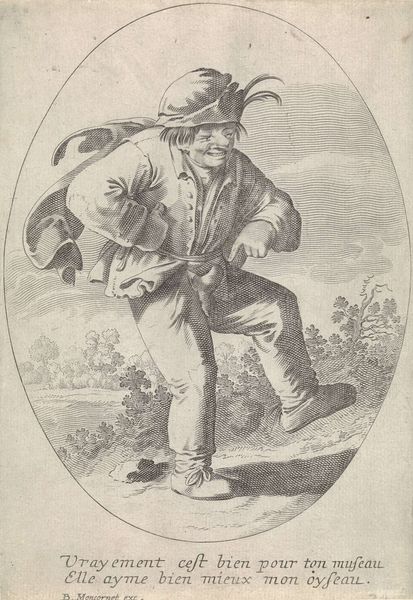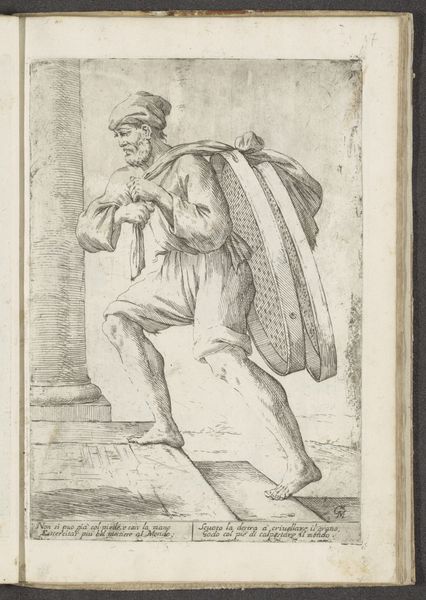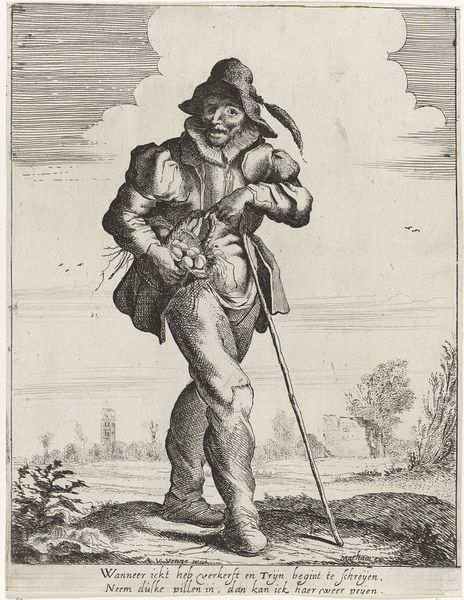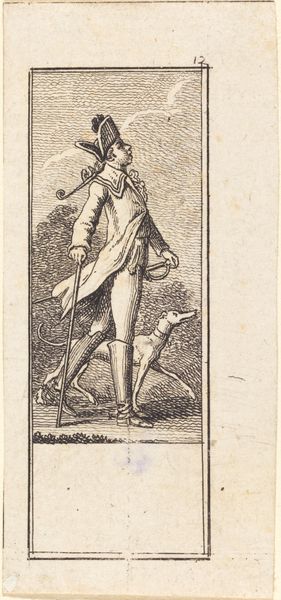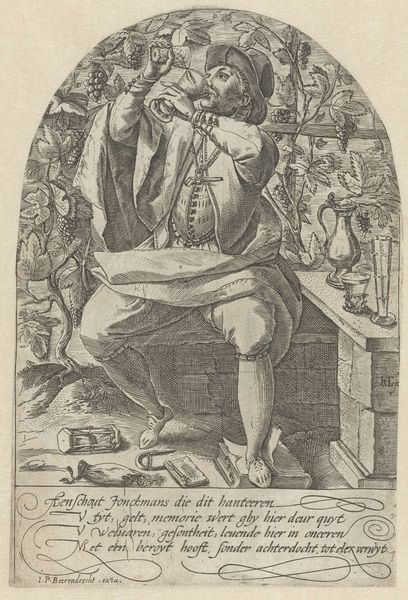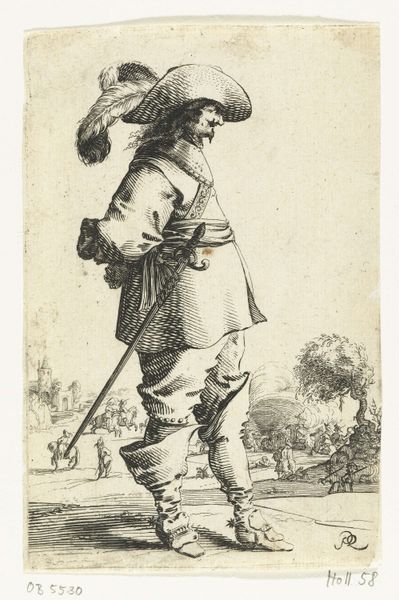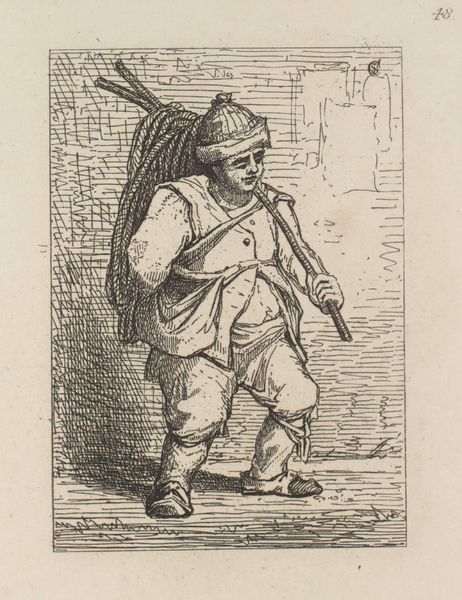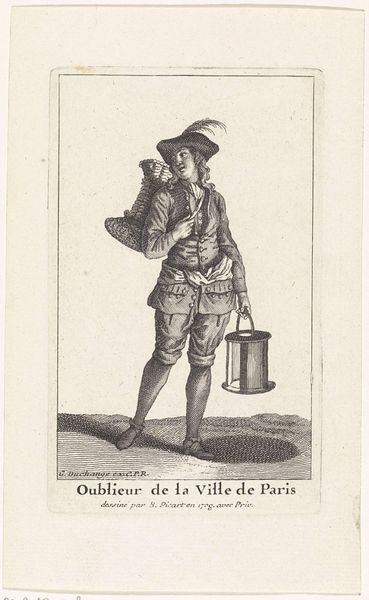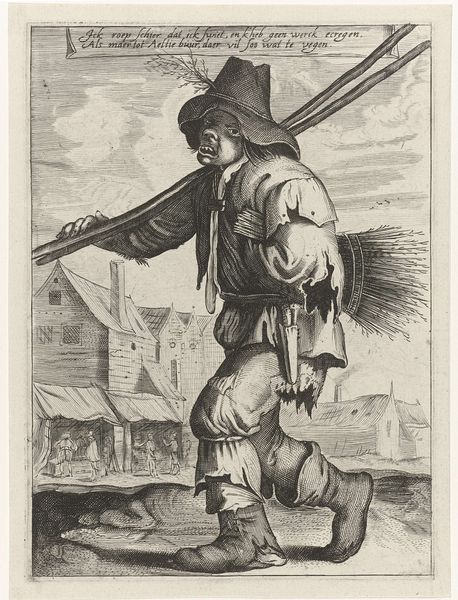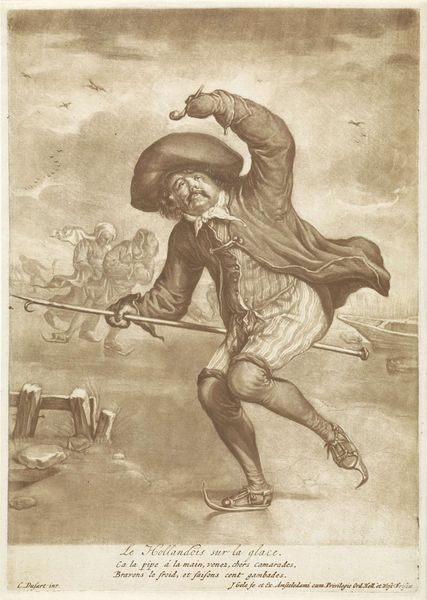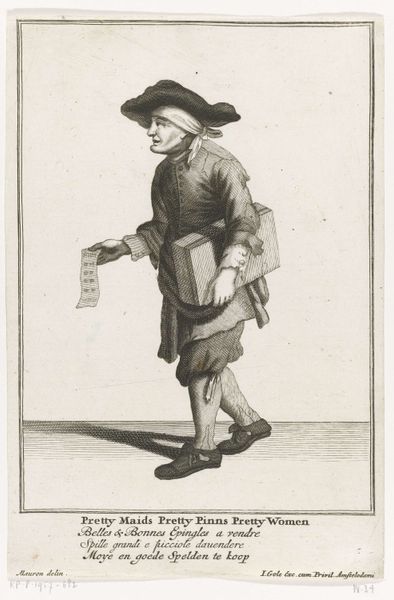
print, etching
#
portrait
#
baroque
# print
#
pen illustration
#
etching
#
book
#
old engraving style
#
figuration
#
line
#
pen work
#
genre-painting
Dimensions: height 139 mm, width 76 mm
Copyright: Rijks Museum: Open Domain
Curator: Here we have an etching from the 18th century, titled "Rondreizende boekverkoper," or "Traveling Bookseller," its anonymous creator capturing a fleeting moment in the daily life of the time. Editor: My first impression is one of quiet industriousness; a sort of pre-industrial hustle. The stark lines of the etching emphasize the man's forward momentum. The weight of his trade—literally carried on his shoulders. Curator: Indeed. Let's consider the social context. This image speaks to a burgeoning literacy, but also, perhaps, to the precarious existence of those outside established guilds, forced to hawk their wares from place to place. Editor: Exactly! Think of the paper, the ink, the press – all objects of labor. This simple print is actually the product of a whole chain of human activity, from the making of the materials themselves to the very act of its consumption! It blurs that line between craft and commerce, doesn't it? Curator: Absolutely. And look at what he’s selling—the inscription mentions books "for children.” That hints at evolving ideas around childhood and education; books used not just for instruction, but possibly enjoyment. It challenges traditional roles by portraying what books signify to a broader class than ever before. Editor: See how that woven basket conforms to his body? Even that is itself a technology of carrying! The curve mirrors his own stance in the face of the weight and length of what must have been very long journeys to earn a modest profit selling them. Every material choice points to necessity, not luxury. Curator: It brings up questions about access to knowledge, doesn't it? About who gets to shape the narratives and interpretations circulated. And how that circulation might affect notions of power, authority, even subversion, across different social strata. Editor: And what about the destination of those books? Who consumes these texts, and what worlds will these open to them as tools and forms? Curator: Seeing it this way, this simple etching offers a rather profound snapshot of intellectual life encountering economic realities in the 18th century. Editor: I concur. A print, yes, but so much more – an echo of work and circumstance captured for future gazes and consideration.
Comments
No comments
Be the first to comment and join the conversation on the ultimate creative platform.
